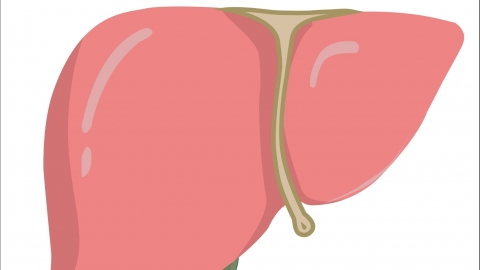What does it mean to have a 2mm gallbladder polyp?
Generally, a 2mm gallbladder polyp may be caused by factors such as an imbalanced diet, slowed metabolism due to aging, chronic cholecystitis, abnormal cholesterol metabolism, or early-stage gallbladder adenomyosis. Depending on the specific situation, patients can improve their condition through general management, medication, and other approaches. Detailed analysis is as follows:
1. Imbalanced Diet
Long-term consumption of high-cholesterol and high-fat foods increases cholesterol levels in bile, leading to gradual deposition and formation of small 2mm polyps. Adjusting the diet by reducing intake of animal offal and fried foods, while increasing low-fat, high-fiber foods such as spinach, apples, and oats, can help. Eating regular meals and avoiding prolonged fasting is also recommended.

2. Slowed Metabolism Due to Aging
With advancing age, metabolic rate declines and bile excretion function weakens, making it easier for cholesterol to deposit on the gallbladder wall and form polyps. Engaging in mild daily exercises such as walking or tai chi can promote metabolism. Maintaining a regular sleep schedule and avoiding late nights helps reduce metabolic burden.
3. Chronic Cholecystitis
Prolonged inflammation of the gallbladder causes mucosal hyperplasia of the gallbladder wall, resulting in 2mm inflammatory polyps. Under medical guidance, medications such as Xiaoyan Lidan tablets, Jin Dan tablets, or ursodeoxycholic acid capsules may be taken to reduce inflammation. Regular ultrasound monitoring is recommended to track changes in polyp size.
4. Abnormal Cholesterol Metabolism
An imbalance between cholesterol synthesis and excretion leads to excess cholesterol entering the gallbladder via bile, where it deposits on the gallbladder wall and forms cholesterol polyps. Under medical supervision, lipid-lowering drugs such as simvastatin tablets, rosuvastatin calcium tablets, or pravastatin sodium tablets may be used to regulate cholesterol levels. Weight control is also important to prevent obesity from worsening metabolic dysfunction.
5. Early-Stage Gallbladder Adenomyosis
In the early stages of gallbladder adenomyosis, localized glandular hyperplasia of the gallbladder wall appears as a 2mm polyp-like protrusion. It is recommended to undergo gallbladder ultrasound every 3–6 months to monitor for polyp growth. If abdominal pain occurs, medications such as belladonna tablets, dl-hyoscine butylbromide tablets, or pinaverium bromide tablets may be used under medical guidance to relieve discomfort.
In daily life, strict control of high-fat and high-cholesterol diets is essential; healthy eating habits should be cultivated. Regular moderate exercise helps maintain normal metabolism and body weight. Follow-up examinations should be conducted as prescribed to monitor polyp changes. Seek prompt medical attention if symptoms such as abdominal pain or nausea occur, to avoid disease progression. Maintaining emotional stability can also help reduce gallbladder irritation.





